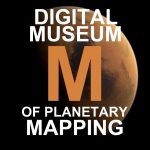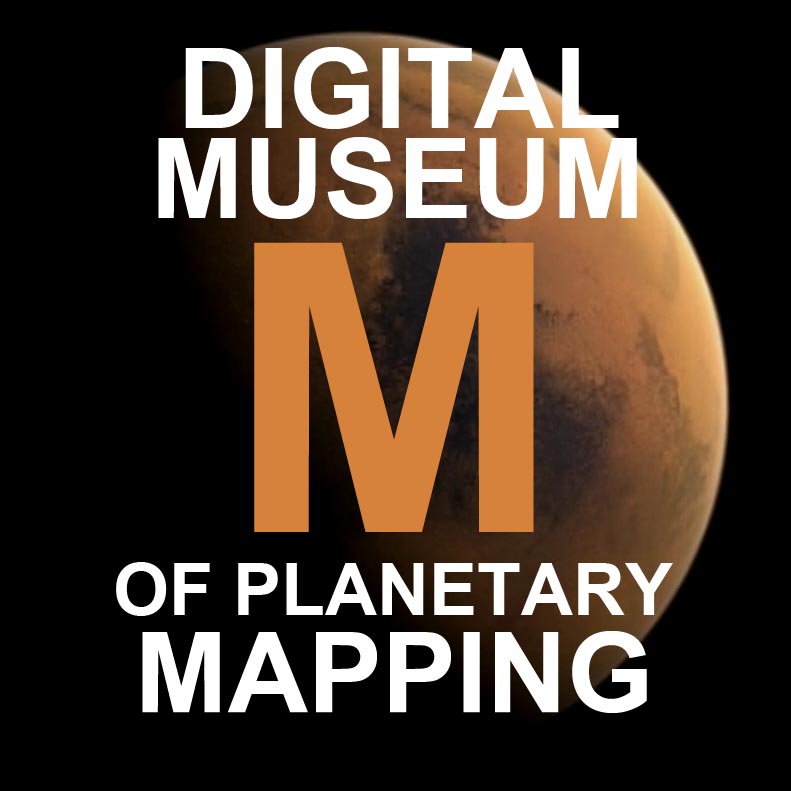2017 in Review 1: New Planetary Web Mapping Servers
2017 brought a boom in planetary online WMS services. We show you which new service can do what.
The new Google map
Google worked closely with NASA the next corner in Silicon Valley to prepare the highest, 5m/px resolution global photomosaic of Mars in 2012 that even researchers used for browsing Mars, only available through Google Earth, but not in the web-based map. This year Google added a wealth of new layers, although nothing is published about the image sources or cartographic control. Perhaps at LPSC2018. The service “as is” but still provides the fastest planetary image browsing opportunity for the armchair scientist. Maps include clickable nomenclature. The uniqueness of Google maps is that they are original photomosaics you can’t find elsewhere.
Some of the additions include
- a beautiful high resolution multiscale color map of Mercury, which shows albedo at low resolution and low-sun relief view when you zoom in, both MESSENGER data
- a global radar view of Venus at full Magellan resolution
- a so-so albedo view of the Moon
- Mars is now a not very seamless but quite high resolution HRSC color mosaic with some gaps
- Ceres is added but not Vesta
- Color and multiscale mosaic for Ganymede and Callisto
- Titan is a nicely rendered seamless infrared+radar view at high resolution
- Pluto and Charon is also the highest resolution global mosaic in color
- And mosaics for other outer solar system satellites
https://www.google.com/maps/space/earth
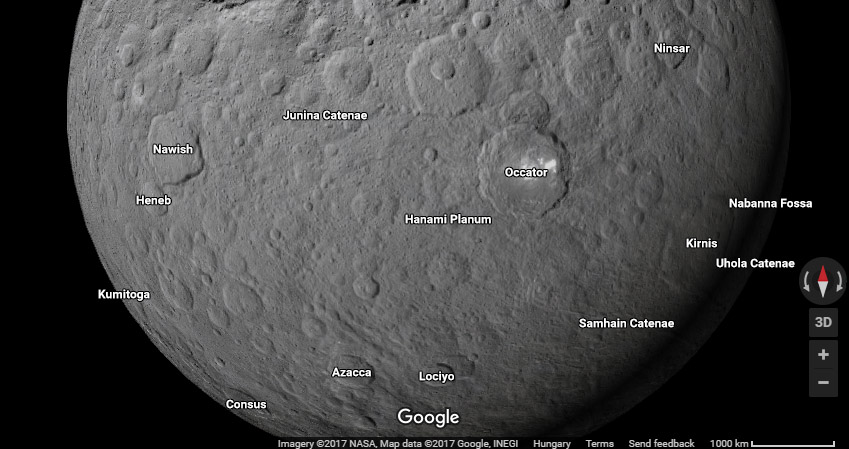
ESRI’s Solar System Atlas
The company behind ArcGIS, the most commonly used mapping software in planetary cartography, has published its online atlas from the layers also available for direct import into an ArcGIS project. Unlike for Google, credit is given for all image sources, but in this case mosaicking was not done by ESRI, but all maps were taken from USGS/NASA. This service is basically a tile service to quickly display existing data, including geologic maps.
http://esripm.maps.arcgis.com/apps/MapJournal/index.html?appid=f737586c543e48428b96df64057ebed0#map
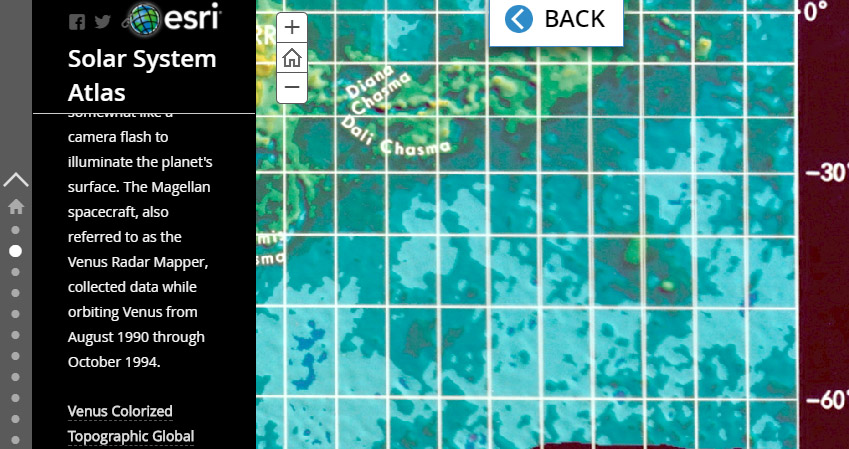
Planetary Surface Portal / PSUP
This is a service from French university observatories (Paris Sud and Lyon), who made their OMEGA data available through this service. OMEGA (Observatoire pour la Mineralogie, l’Eau, les Glaces et l’Activit) is a hyperspectral imaging spectrometer developed in France, originally for a failed Russian mission, onboard the European Mars Express spacecraft. Mineralogial and albedo data can be viewed, and downloaded from the WMS along with some feature database layers.
http://psup.ias.u-psud.fr/sitools/client-user/index.html?project=PLISonMars
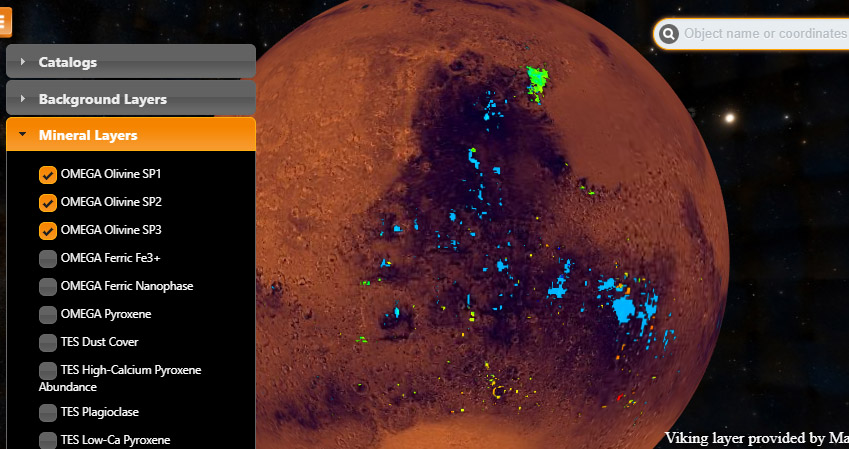
Planetary Cesium Viewer
The Cesium technology based viewer from the Paris Sud University in France shows global mosaics for basically all major moons and planets in the Solar System, including the gas giants. The maps can be viewed as globes or 2D flat maps. The code is open, and available on Github.
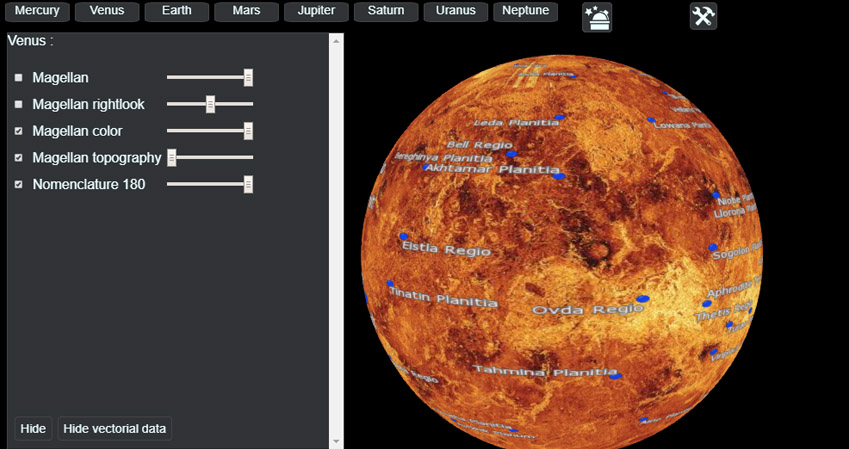
Open Planetary Map Mars Basemap v0.1
The Open Planetary project aims to develop a vector based Mars map that users can modify and personalize. This is a community-based project where planetary scientists can share their cartographic ideas. The map using CARTO Builder and there are detailed instructions on how you can build your own map within this system. This is the first attempt to create a vector-based Mars basemap, which would bring fresh air into a raster-filled planetary mapping universe.
http://openplanetary.co/opm/#3/11.80/-45.04
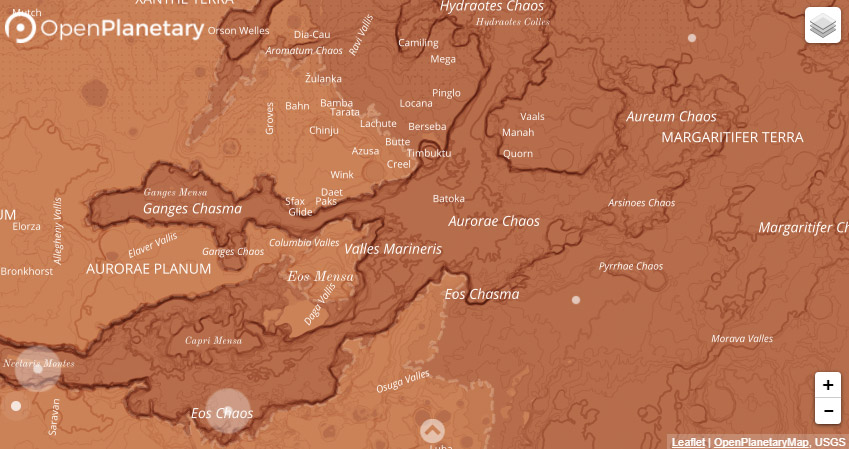
Moon Trek
The official NASA outreach/research map combo for the Moon, an online platform for both enthusiasts and researchers. Numerous datasets, mapping and analysis tools are offered. Developed at NASA Ames and JPL in California.
https://moontrek.jpl.nasa.gov
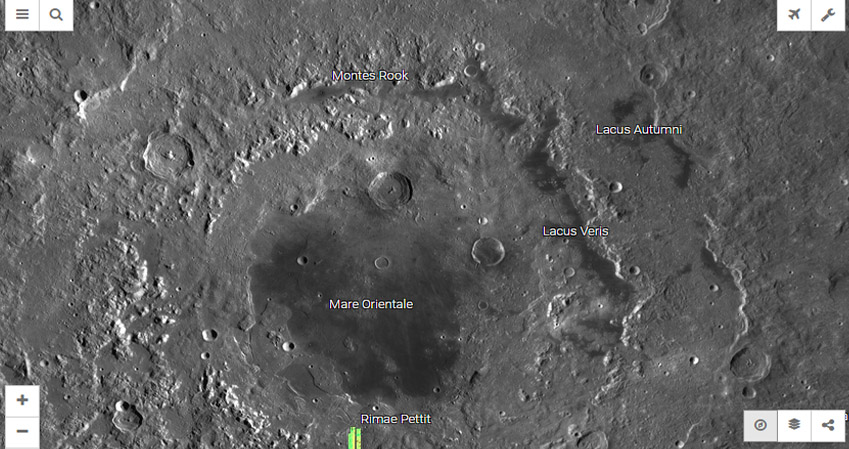
And we did not list those WMS services that started before 2017…
Which one is your favorite? Vote for the best new planetary WMS in 2017:
